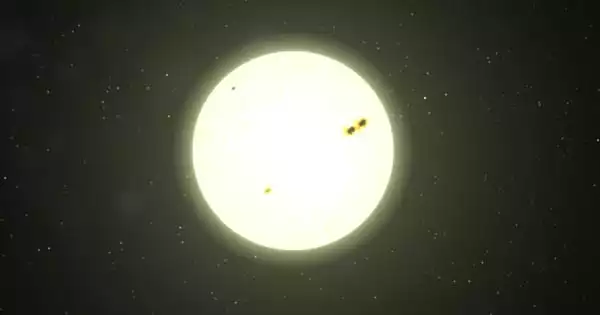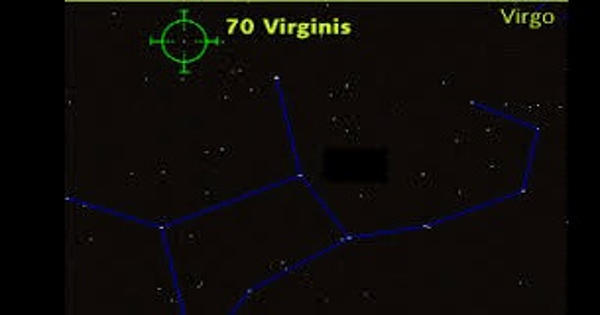HW Virginis, abbreviated HW Vir, is an eclipsing binary system (of the Algol type) located in the constellation of Virgo, approximately 563 light-years away based on the parallax determined by the Gaia mission. It’s known as a Variable Star. It is not part of the Virgo constellation outline, but it is within its boundaries. A red dwarf star and an eclipsing B-type subdwarf star make up the system. Every 0.116795 days, the two stars orbit each other. The star cannot be seen with the naked eye and must be viewed with a telescope. Using the most recent Hipparcos data from 2007, the distance between HW Virginis and Earth is 1606.72 light-years.
HW Virginis b is a gas giant exoplanet that orbits an A-type star. Its mass is 14.48228 Jupiters, it takes 12.7 years to complete one orbit of its star, and is 4.69 AU from its star.
Eclipse timing variations
Based on fluctuations in the timing of the system’s eclipses, it was stated in 2008 that two huge planets with masses of 8.47 and 19.2 times the mass of Jupiter were in orbit around the binary, revolving with periods of 9.1 and 15.8 years, respectively. The variable star’s position in the night sky is governed by the Right Ascension (R.A.) and Declination (Dec.), which are similar to the Earth’s Longitude and Latitude.

The estimated radius of HW Virginis has been computed to be 0.24 times that of the Sun. The radius of the Sun is 695,800km, hence the radius of the star is predicted to be 165,401.32km. It has an apparent magnitude of 10.50, which is a measure of the star’s brightness as seen from Earth. Apparent Magnitude is also known as Visual Magnitude.
The proposed system was eventually proven to be exceedingly unstable, with mean lives of less than 1000 years in the parameter space permitted by data uncertainties. An alternate, dynamically-stable orbital solution with a 14.3 Jupiter mass object on a 12-year orbit and an outer companion of 65 Jupiter masses on a 55-year orbit was proposed, but it has been noted that the outer companion’s orbital parameters are highly unconstrained, casting doubt on the reality of this model once more.
Because of the difficulties in modeling this system and the claimed planets orbiting several other post-common envelope binaries, it has been suggested that the eclipse timing differences used to infer the existence of planets have a non-planetary origin. As of 2018, and again in 2021, the eclipse time fluctuations of HW Virginis were proved to be incompatible with all previous planetary system models. However, differences in eclipse timing cannot be explained by known stellar causes. Using the original Hipparcos data from 1997, the parallax to the star was given as 1.83000, implying that HW Virginis is 1782.31 light years distant from Earth, or 546.45 parsecs.
















